Not many good things came out of the Vietnam War, but one was a way of protecting Bell ‘Huey’ rotor blades from shrapnel and operating debris with a protective wrap invented by 3M. Without that innovation, I would not be sharing space in a climate-controlled clean room with a Ferrari F40.
I’m at Jules Sturgess Automotive to investigate just how the dark art of protective wrapping is achieved. Please note this is ‘protective’, not the usual subtle camo wrappage favoured by Premier League halfwits. We are in the invisible paint protection business and directors Ruth Blomiley and Jules Sturgess are here to make sure that I fully understand what goes on.
Obviously, I am rather transfixed by the F40, and Jules reckons that if this was any other car, he might be at the end of his tether by now. “The Ferrari F40 is a childhood dream. Just taking it off the transporter and driving it around the yard and into the booth, I couldn’t help but grin,” he says.
What you soon learn by looking closely at the multi-million-pound motor is just how average the finish was and some of the localised panel resprays have been over the years. It’s a 1989 car and has done only 15,000km (about 9300 miles) but at least it gets used and that’s why it is here: for protection.
So what exactly is the material? To my untrained eye, it is industrial-grade cling film. Ruth looks at me quizzically and then puts me right: “We use the market leader, Xpel Ultimate Plus. It comprises a tough polyurethane support layer that gives it the strength to withstand and absorb impacts from stones and other road debris. Not only that, it can even resist being pierced by things like keys with a self-healing top coat. This layer is made of gel, which will self-heal minor scratches, scuffs and swirl marks naturally over time.”

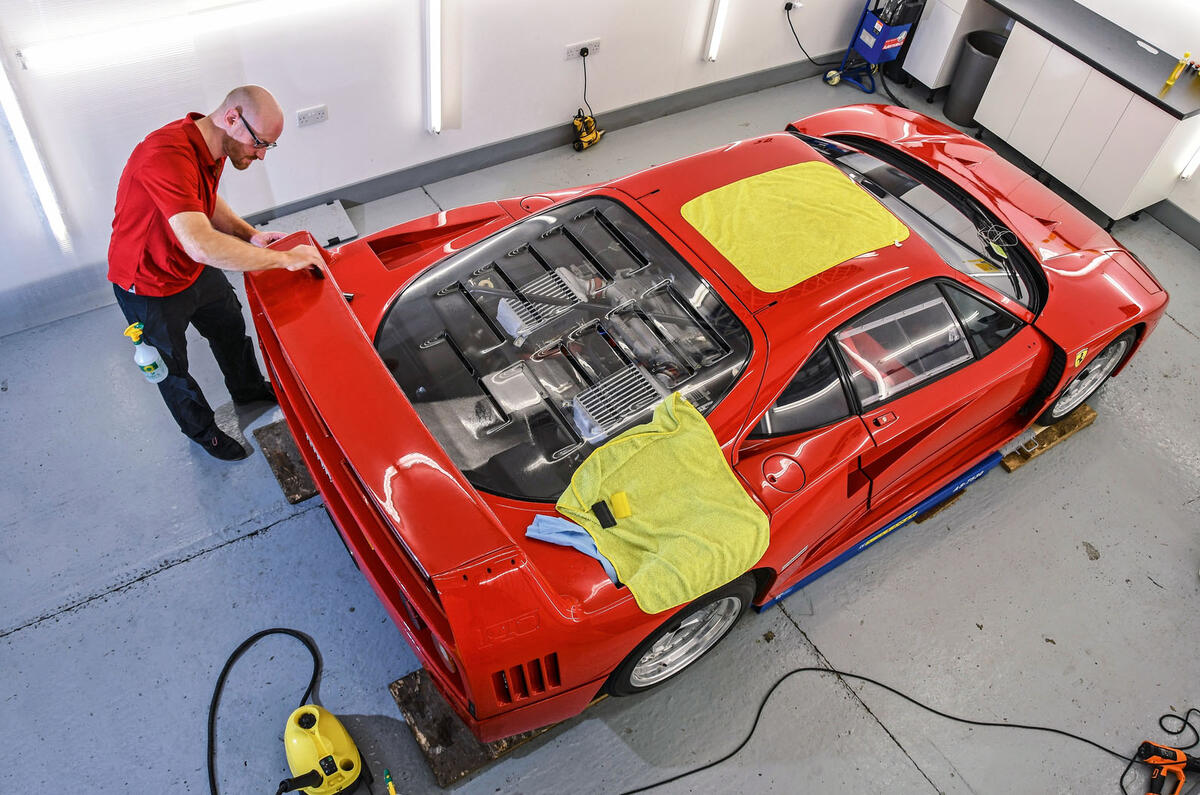
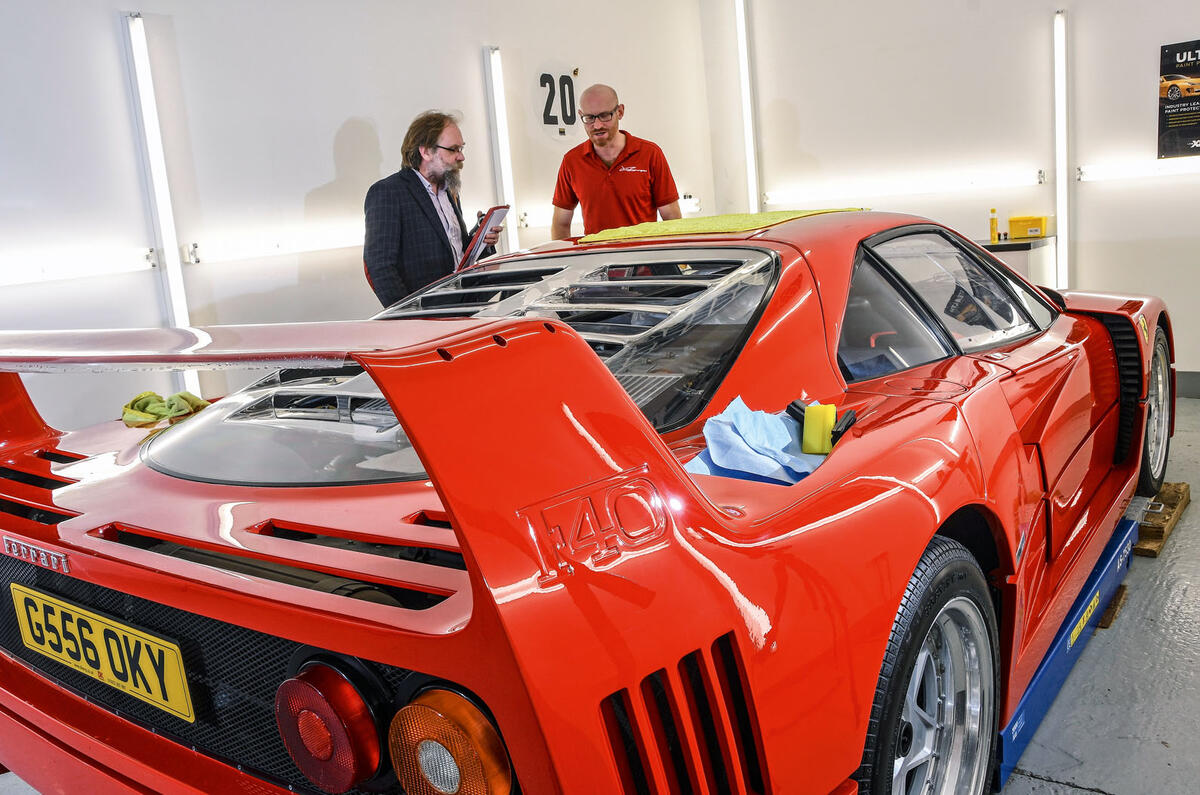
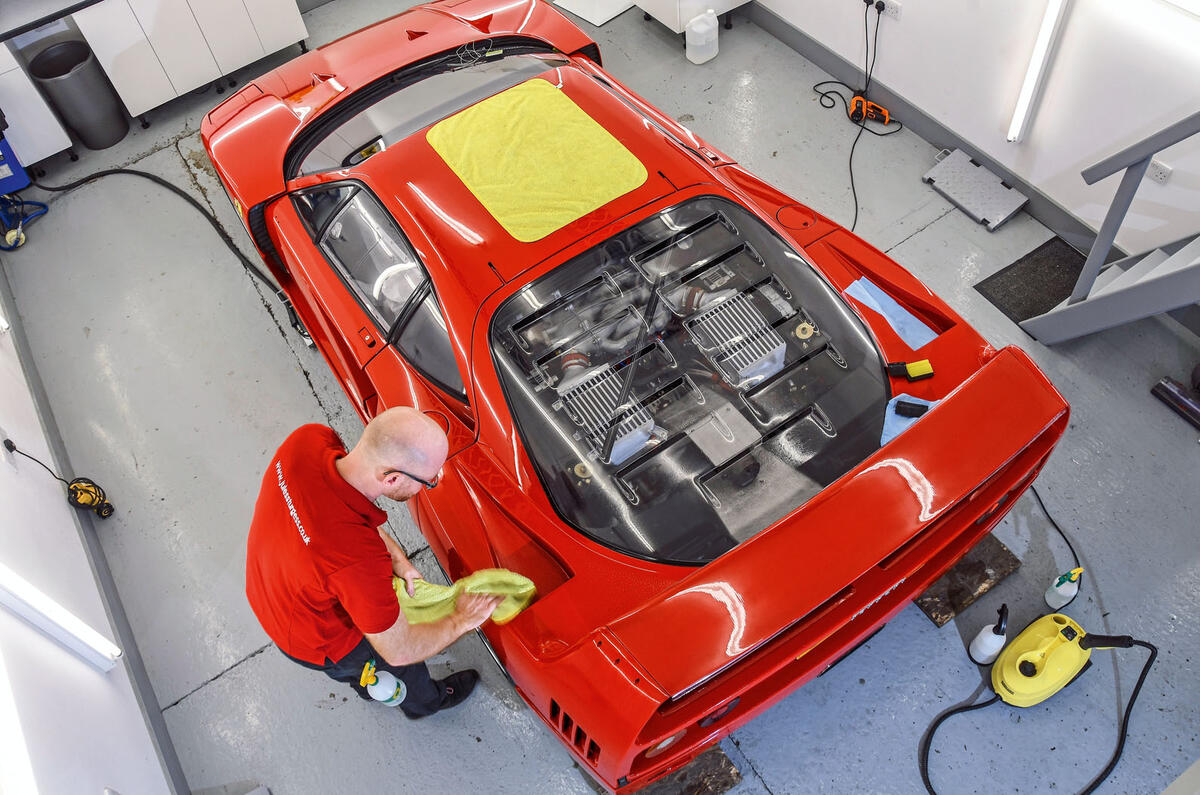












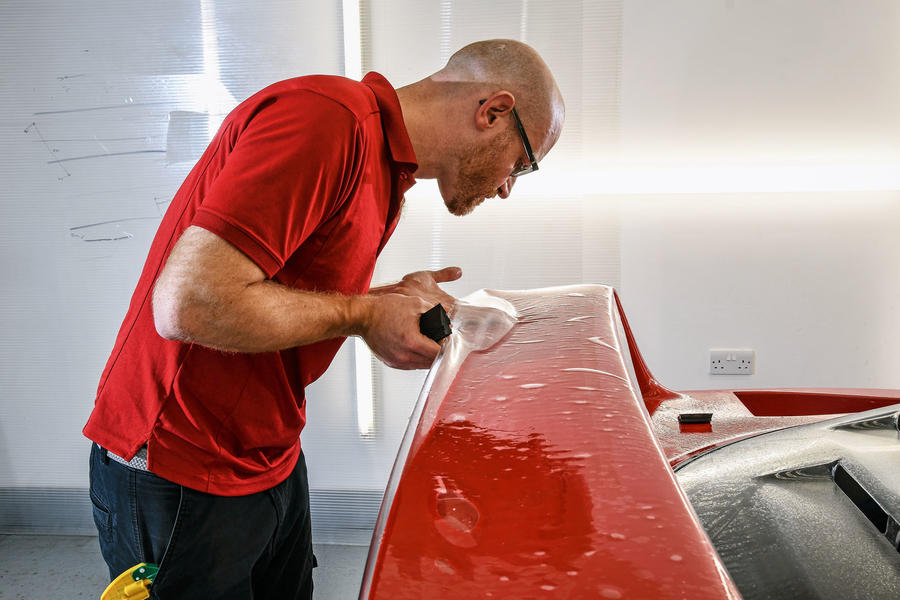



Join the debate
Add your comment
Fellow Threaders
Does anybody else experience difficulties signing in?
This happens all too often. It
doesn't recognise my log in details and I'm directed to my inbox and asked to create a new password etc. It's a lot of faff, after which I loose the will to live!
Anybody?
Any response would be much appreciated.
Just Saying wrote:
Not had that issue, the system frequently prevents me from posting, saying I have an embedded link in my post, and I e only recently sussed out that to enable a reply with a quote I have to disable rich text, whatever that means, but it's underneath the comments box.
Regarding this film, it makes a lot of sense I reckon if you are using your car a lot, especially front end treatment for a track car, but the low mileage of this F40 seems to make it unnecessary. I am surprised it doesn't help prevent uv paint fade, as, especially, with an older red car, the body work can end up looking like a patchwork quilt, with the wrap on you are unable to polish the panels to even up the finish.
Oh my!
Firstly fellow posters, we're all intelligent enough to get our points over without insulting, swearing and not putting the topic first, yes, and I've sort of changed my opinion, if the finish goes a bit tatty after so long, then it's a waste of money, for the five grand I'd expect it to protect and be good as the first day it was applied.
*respray*
*respray*